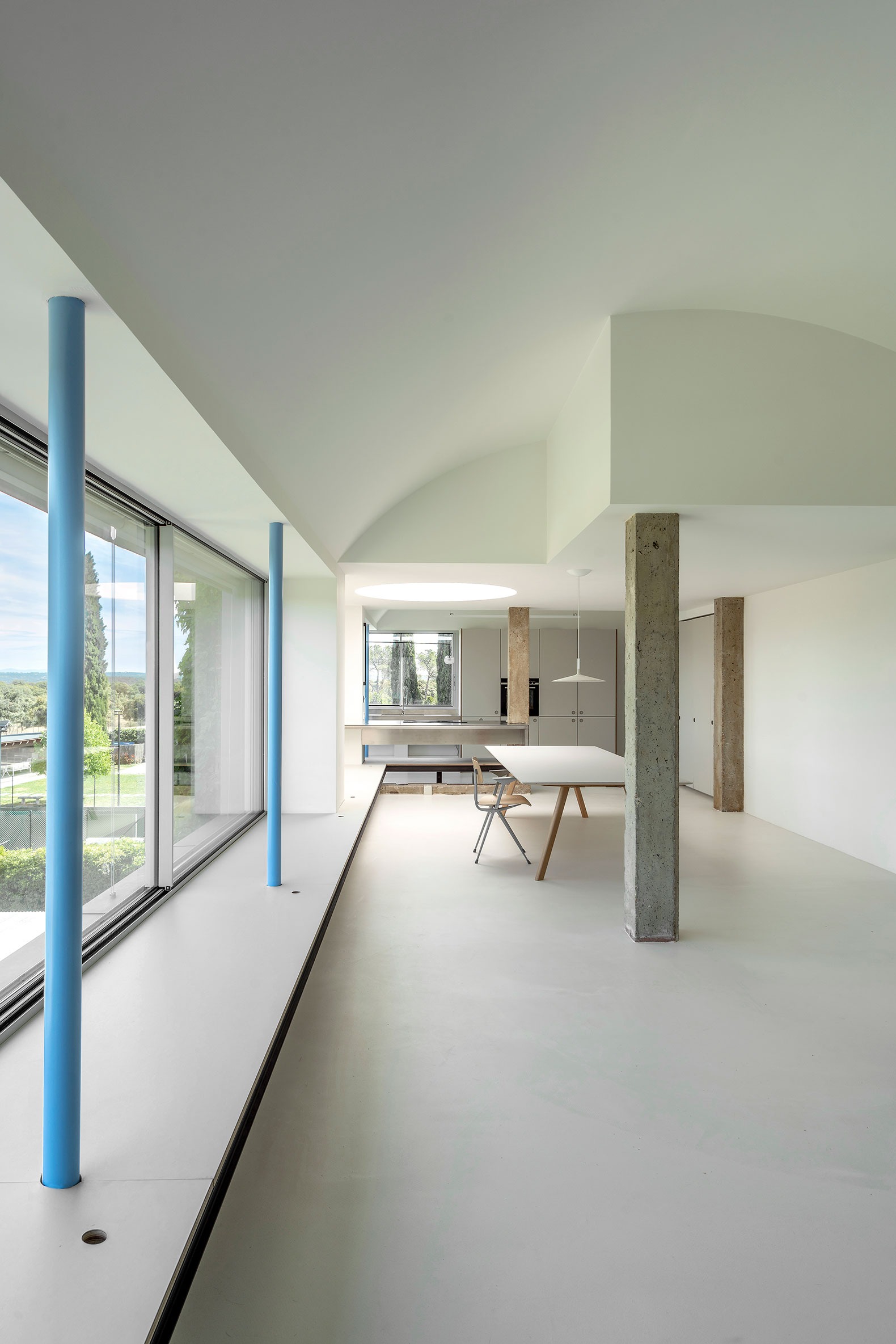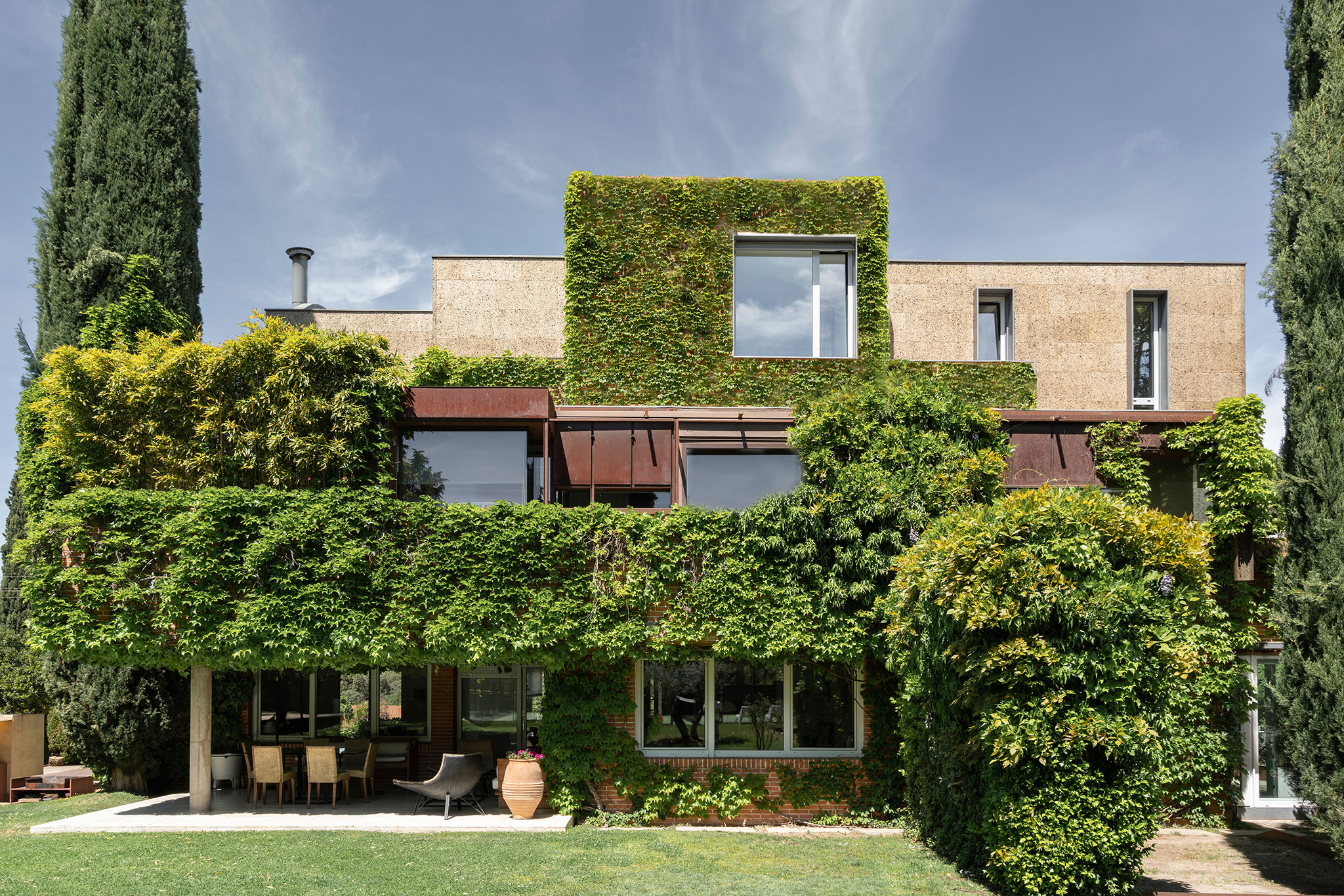
The new space designed by EME157 architectural studio began with the decision to crown the original house with a vault to increase the interior height without affecting the exterior perception, respecting the original cubic shapes of the house. The new floor was conceived as a distinct element that did not compete with the rest of the building.
The interior was organized on two floors. The ground floor where the entrance, a bedroom and a bathroom are located and the upper floor is divided into two areas: a private one with a bedroom and bathroom, and a public one with a kitchen, dining room and living room open to the outside through large windows. This entire space is flooded with overhead light from a large skylight, providing luminosity and spaciousness.
The vault was built using zinc as the main material. For the rest of the intervention, cork was used, due to its lightness and insulating capacity. In addition, this material contrasted with the brick of the existing house. The interior was designed with simple materials such as self-levelling mortar, stainless steel and plywood, combining contrasts between cold and warm elements. The original concrete structure was kept visible, to contrast with the new circular metal pillars painted blue that blend with the views of the house.

DOMEHOME. Extension of a single-family home in Aravaca by EME157. Photograph by Luis Asín.
Project description by EME157
The design consists of extending a single-family home in Aravaca to create an additional floor, introducing a new dwelling. The renovation is based on making the terrace located on the top floor of the house habitable to house an independent apartment for the family's son.
The process of creating the new space began with the external appearance of the intervention. An important element when starting the design was how to crown the previous brick house, covered with lots of vegetation. To avoid the house becoming too high, the use of a vaulted shape was chosen. Following this strategy, a greater height was achieved inside, providing greater spatial quality, without being perceived as high from the outside. In addition, the shape used to crown the house did not compete with the cubic shapes of the rest of the house.
The idea was to make the new floor, which increased the house upwards, be perceived as a different element. That is why the idea of using cork arose. The material was suitable due to its lightness and its insulating capacity in contrast to the solidity of the brick of the rest of the house. For the construction of the vault it was decided to use zinc.

The design process was very fluid, with clients open to new proposals. As soon as the vault was created, and based on the need to prioritise the incredible views from this height, the interior space took shape immediately.
The house has 50 m² on the ground floor where the access, one bedroom and a bathroom are located, and the upper floor with 130 m² divided into two areas: the private area and the public area. The private area has a bedroom and a bathroom. In the public area, the kitchen, dining room and living room are located in one open room that extends to the outside with large windows to the north. This space also preserves a large circular skylight that previously illuminated the stairwell, which floods the entire room with light.
The interior was resolved with few materials. Mortar floors, polished stainless steel for countertops and shower, and plywood and linoleum board for the rest of the furniture: kitchen, cabinets, shelves, even doors and stairs. Playing on the contrast between cold and warm materials. The original concrete beam and pillar structure also played an important role, as it was left exposed and contrasts with the new structure of slender circular metal pillars painted sky blue so that they blend in with the privileged views of the house.





























































